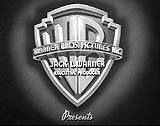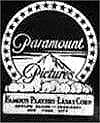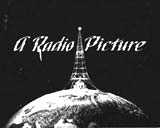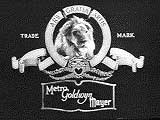Warner Bros.
2.
Adolph Zukor's Famous Players (1912) and Jesse Lasky's Feature Play - merged in 1916 to form Famous Players-Lasky Corporation; it spent $1 million on United Studios' property (on Marathon Street) in 1926; the Famous Players-Lasky Corporation became Paramount studios in 1927, and was officially named Paramount Pictures in 1935; its greatest silent era stars were Mary Pickford and Douglas Fairbanks; Golden Age stars included Mae West, W.C. Fields, Bing Crosby, Bob Hope, and director Cecil B. DeMille
Famous Players-Lasky
(Paramount)
3.
RKO (Radio-Keith-Orpheum) Pictures, evolved from the Mutual Film Corporation (1912), was established in 1928 as a subsidiary of RCA; it was formed by RCA, Keith-Orpheum Theaters, and the FBO Company (Film Booker's Organization) - which was owned by Joseph P. Kennedy (who had already purchased what remained of Mutual); this was the smallest studio of the majors; kept financially afloat with top-grossing Astaire-Rogers musicals in the 30s, King Kong (1933), and Citizen Kane (1941); at one time, RKO was acquired by eccentric millionaire Howard Hughes
RKO
4.
Marcus Loew of Loew's, Inc., was the parent firm of what eventually became Metro-Goldwyn-Mayer. Metro Pictures Corporation was a production company founded in 1916 by Richard A. Rowland and Louis B. Mayer. In 1918, Mayer left this partnership to start up his own production company in 1918, called Louis B. Mayer Pictures. In 1920, Metro Pictures Corporation (with its already-acquired Goldwyn Pictures Corporation) was purchased by early theater exhibitor Marcus Loew of Loew's Inc. In another acquisition, Loew merged his 'Metro-Goldwyn production company with Louis B. Mayer Pictures.
So, in summary, MGM, first named Metro-Goldwyn Pictures, was ultimately formed in 1924 from the merger of three US film production companies: Metro Pictures Corporation (1916), Goldwyn Pictures Corporation (1917), and the Louis B. Mayer Pictures Company (1918); Irving Thalberg (nicknamed the 'boy wonder') was head of production at MGM from 1924 until his death in 1936; the famous MGM lion roar in the studio's opening logo was first recorded and viewed in a film in 1928; its greatest early successes were The Big Parade (1925), Broadway Melody (1929), Grand Hotel (1932), Mutiny on the Bounty (1935), A Night at the Opera (1935), The Good Earth (1937), Gone With the Wind (1939), The Wizard of Oz (1939), as well as Tarzan films, Tom and Jerry cartoons, and stars such as Clark Gable, Greta Garbo, and Spencer Tracy
Metro-Goldwyn-Mayer
5.
Fox Film Corporation/Foundation, founded in 1912 by NY nickelodeon owner William Fox (originally a garment industry worker), was first known for Fox Movietone news and then B-westerns; its first film was Life's Shop Window (1914); it later became 20th-Century Fox, formed through the 1935 merger of 20th Century Pictures Company (founded in 1933 by Darryl F. Zanuck) and Fox; it became famous for Shirley Temple films in the mid-30s and Betty Grable musicals in the 40s
| Warner Brothers | Famous Players-Lasky (Paramount) |
|---|---|
 |  |
| RKO | Metro-Goldwyn-Mayer |
 |  |
| Movietone Newsreels | 20th Century Pictures |
 |  |
| 20th-Century Fox | |
 |
For more information click here



